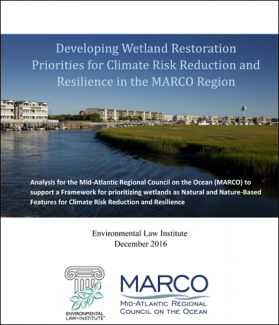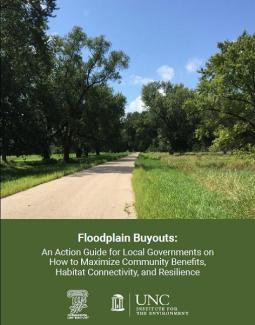Everglades Author Would Back Kids
Everglades Author Would Back Kids
The survivors of the horrible massacre at the high school in Parkland, Florida, have created a national movement in favor of measures to reduce gun violence. Firearms kill roughly as many Americans as does pollution and thus represent an equivalent threat to public health.
In bringing their message to the nation’s capital in a huge demonstration in March, with sibling gatherings around the country, they were consciously following in the tradition of their school’s namesake. Before Rachel Carson, before Aldo Leopold, there was Marjory Stoneman Douglas. “In the history of the American environmental movement, there have been few more remarkable figures,” according to the Independent. She was a prolific freelance writer — a staple of the Saturday Evening Post’s fiction lineup during the Depression — and earlier one of the vanguard of female journalists of a muckraking bent who began to come on board early in the last century (think Ida Tarbell).
It was relatively late in life, in 1947, that she published The Everglades: River of Grass, a great example of branding that burned into the public consciousness that this was a treasure, not a swamp that had to be drained for development. She was eventually bestowed the sobriquet “Empress of the Everglades” and became beloved by conservationists and dreaded by industry.
Douglas campaigned for environmental protection generally and for Everglades protection specifically for the rest of her long life — she died in 1998 at the age of 108. The massacre survivors who led the march in Washington were born a few years later.
Her famous book was a project that began from an assignment for a series of works on American rivers. She researched the Miami River and found it had its source in the Everglades. The publisher permitted her to change her scope, and she spent the years of World War II crisscrossing the huge wetland, gathering information.
It was during this research that she came to realize that the water in the Everglades was a huge southward flow emanating from Lake Okeechobee and flowing to the Gulf of Florida. That gave her the famous title. Then she penned her signature line to open the book: “There are no other Everglades in the world.”
Fifty years later the Christian Science Monitor would comment, “Today her book is not only a classic of environmental literature, it also reads like a blueprint for what conservationists are hailing as the most extensive environmental restoration project ever undertaken anywhere in the world.”
From her arrival in South Florida, it is safe to say that Douglas was horrified by what she saw happening. Before World War I, Miami was an outpost of 5,000 people. But even then sugar cane farmers and ranchers were burning down the Everglades to make way for their exploitation of what Douglas came to realize was the source of drinking water for the burgeoning city and the rest of growing South Florida. Her evocative language shamed the businessmen for their rapaciousness and galvanized the public to protect the wetland, although that is still a project very much in progress.
Hired by the Miami Herald in 1915 to write the society column, her third day on the job she wrote about suffrage. She also took on the Ku Klux Klan. “She wrote whatever the hell she wanted to write about,” says biographer Jack E. Davis. The Washington Post enumerates columns “shaming her readers for not knowing that Florida was still running a slavery-like convict-leasing program and demanding the creation of a public welfare office for the protection of children.”
As the Post puts it, “Douglas had a reputation for relentlessly challenging politicians and powerful political interests even on issues that seemed like lost causes at the time.” The paper calls that “a description that almost eerily parallels the efforts of the teenagers leading the charge today.” Of the survivors’ efforts, the Post quoted a former journalist for the Tampa Bay Times who was among the last to interview the late activist: “I would bet my soul that Mrs. Douglas would not only approve, but applaud,” said Jeff Klinkenberg.
Douglas, like the kids, had her experience lobbying Florida legislators, in her case for suffrage — an occasion she likened to talking to “dead mackerel.” But her constant crusade on all fronts to protect her beloved wetland was eventually rewarded by some measures mitigating the harm and attempts at restoration.
The effort to protect the River of Grass is far from over. The high school in Parkland was built on land reclaimed from the Everglades, an irony that bothered the great lady and serves to illustrate the difficulties in preserving this national treasure. There are no other Everglades in the world.
Benefits of Regulations Far Exceeded Costs During Obama Era
The White House Office of Management and Budget on Friday evening [February 23] released its annual report on the costs and benefits of federal regulations, showing that the benefits of major Obama-era rules far exceeded the costs.
The report found the annual benefits of major federal regulations from 2006 to 2016 were between $219 billion and $695 billion, while the annual costs were between $59 billion and $88 billion.
The findings are at odds with the Trump administration’s push to roll back a host of Obama-era environmental rules.
Public interest groups were quick to accuse OMB of burying the report because it undercut the administration’s deregulatory agenda.
“They released it on a Friday evening while Congress was on recess and nobody was really paying attention in Washington,” said James Goodwin, senior policy analyst with the Center for Progressive Reform.
“For most normal people, this report is good news,” Goodwin said. “It basically says that all the regulations the Obama administration put out had huge net benefits.
“For the Trump administration, it’s bad news because they have to say something nice about the Obama administration, which they’re loathe to do.” . . .
The report “directly contradicts, rather than supports, the push to roll back protections in virtually every sector,” [Public Citizen’s Amit] Narang said.
— E&E News
“We’ve spent 40 years putting together an apparatus to protect public health and the environment from a lot of different pollutants. . . . [EPA Administrator Scott Pruitt] is pulling that whole apparatus down.”
— William D. Ruckelshaus as quoted in the Washington Post
A World of Environmental Progress
Down Under should have an environmental agency, experts are saying. “Australia needs an independent national agency charged with safeguarding the environment and delivering effective climate policy,” according to The Conversation blog, which cites “a new campaign . . . by a coalition of environmental, legal, and medical NGOs.”
The huge nation, modeled after Great Britain and the United States, surprisingly has been taking care of environmental protection in an ad hoc manner, unlike her progenitors.
“The proposal would involve establishing a high-level Commonwealth Environment Commission that would be responsible for commonwealth strategic environmental instruments, in much the same way that the Reserve Bank is in charge of economic levers such as interest rates.
“The new CEC would manage a nationally coordinated system of environmental data collection, monitoring, auditing, and reporting, the conduct of environmental inquiries of a strategic nature, and the provision of strategic advice to the commonwealth government on environmental matters, either upon request or at its own initiative. The necessary outcomes would then be delivered by government and ministers via a newly created National Environmental Protection Authority.”
Chile protects 4,000-mile coastline with marine reserves. The government in Santiago has passed legislation to protect its famous ocean border, according to the St. Kitts & Nevis Observor. President Michele Bachelet signed the law that creates a string of natural preserves.
“President Bachelet . . . said that Chile needed to establish the basis on which it would conserve its marine territory for the future,” the newspaper reported. “Who we are and who we can be, is inevitably tied up with our 6,400-kilometre coast,” Bachelet said. “This is why it is so important to understand that the sea is vital for our national development.”
The newpaper reports that the legislation “will increase the area of sea under Chilean state protection from 4.3 percent to 42.4 percent, and protect marine life in around 1.4 million square kilometres of sea.”
A new Afghan law would impose the death penalty for major pollution offenses, according to Tolo News. Other environmental crimes will result in serious jail time. “President Ashraf Ghani has issued a decree on the environmental law, stating any person found guilty of committing major pollution-related crimes can face between 16 and 20 years in prison,” the newspaper reports.
The legislation also places the onus on inspectors, who can face fines and prison time for failing to enforce the law, “while an offender whose actions have led to the death of a person can get the death penalty.”
The newspaper notes that “members of the public and health experts have welcomed the enforcement of this law and said that the high levels of pollution, especially in Kabul, has resulted in a marked increased in illnesses.”
The right to a healthy and sustainable environment is vital, a press release from Human Rights Watch, Earthjustice, Amnesty International, and the Center for International Environmental Law claims. The release calls for adoption of an internationally recognized right to ensure “a life of dignity. Clean water, air, and soils, and diverse ecosystems are indispensable for people to lead healthy lives. More generally, the right also protects the civic space needed for individuals to engage in dialogue on environmental policy.”
School’s namesake would have supported gun activists.
National Wetlands Awards Ceremony (2018)
Developing Wetland Restoration Priorities for Climate Risk Reduction and Resilience in the MARCO Region

Working with New York, New Jersey, Delaware, Maryland, and Virginia — the five members of the Mid-Atlantic Regional Council on the Ocean (MARCO) — the Environmental Law Institute prepared a detailed assessment of methods to identify, conserve, and restore wetlands for protection of communities and ecosystems in the face of rapid climate change. ELI in collaboration with an expert panel designed an approach that can accommodate continuous improvement by resource managers, legislators, and policy makers. The approach relies on:
National Wetlands Awards Ceremony (2017)
Floodplain Buyout Case Studies
The Natural Hazards and Opportunity: Community Resilience and Habitat Connectivity project aims to help communities understand and fully leverage the potential ecological and social value of properties acquired under federal hazard mitigation and other programs that fund voluntary acquisitions of flood prone properties.
Floodplain Buyouts: An Action Guide for Local Governments on How to Maximize Community Benefits, Habitat Connectivity, and Resilience

This Action Guide is designed to help local governments across the country leverage hazard mitigation buyouts to protect, restore, and connect habitats in local communities.
Floodplain Buyouts, Community Resilience and Habitat Connectivity
Since 1993, FEMA’s Hazard Mitigation Grant Program has funded the acquisition of over 55,000 flood-damaged properties. Under FEMA’s acquisition programs, once properties are purchased following a disaster, existing structures must be removed and the land must be dedicated to open space, recreational, or wetland management uses. These properties can offer opportunities to restore and permanently protect natural habitats and help conserve biodiversity, while also providing community amenities and improving resilience.
National Wetlands Awards Ceremony (2016)
Restore the Chesapeake

The vast bay and watershed include the largest estuary in the country. Efforts to restore its vastly degraded water quality involve a commensurately large response by the Bay States, the federal Environmental Protection Agency, local governments, and the public.